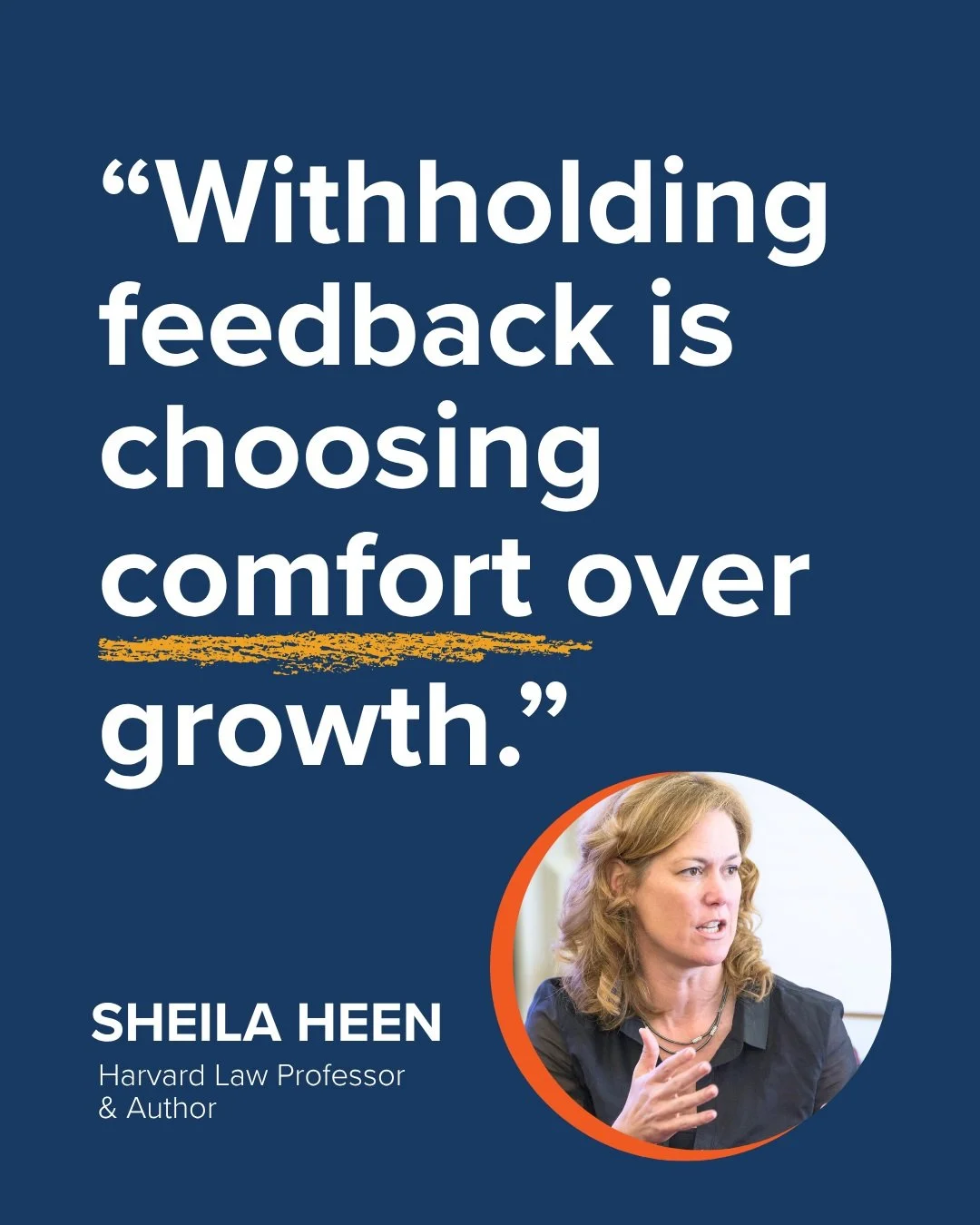Feedback Without Fear: Creating Safe Channels for Constructive Dialogue
Why Constructive Feedback Is Essential for Leadership Growth
In high-performing organizations, feedback isn’t feared—it’s foundational. But many teams still lack the trust and structure needed to give and receive it constructively. A healthy feedback culture empowers people to share openly, improve continuously, and build high-trust relationships across every level of an organization.
Whether you’re in a law firm, a nonprofit, or a professional services company, developing these skills creates a meaningful leadership advantage.
Rethinking Performance Conversations: A Modern Mandate
Gone are the days when performance conversations happened once a year in a high-stakes, one-sided meeting. Today, forward-thinking organizations embrace ongoing dialogue to drive engagement, clarity, and resilience.
Organizations and leaders are shifting the performance review mindset toward regular, real-time constructive feedback that supports growth, not fear.
Ongoing feedback, especially narrative-style, conversational performance reviews, has been shown to boost employee motivation and trust, according to a recent Harvard Business Review study.
When done well, performance conversations create a space where team members can reflect on what’s working, identify areas of improvement, and align their contributions to broader organizational goals.
Building a Strong Feedback Culture Starts at the Top
Creating a psychologically safe environment where feedback can thrive takes intentional effort and consistent modeling from leadership. In our experience, these three pillars help build that foundation:
Normalize Two-Way Dialogue
Great leaders give feedback—and invite it. When a manager openly says, “I’d love your perspective on how I handled that situation,” it signals humility and openness, which encourages others to do the same.
Train for Feedback Conversations
Feedback is a skill. It requires tact, emotional intelligence, and structure. Loeb Leadership offers tools and coaching to help leaders have these conversations with confidence. One powerful method is the “Praise–Concern–Suggest” model, which balances affirmation with accountability.
Create Predictable Feedback Channels
Establishing norms, like regular 1:1s, quarterly 360° reviews, or team retrospectives, helps make feedback a routine, not a rarity. When feedback becomes a habit, it feels less intimidating and more actionable. Making it part of your regular rhythm of business helps people feel more comfortable both giving and receiving feedback, and holding each other mutually accountable for professional growth.
Explore our executive coaching services to support leaders in building feedback routines that foster psychological safety, trust, and innovation.
Constructive Feedback in Action: Insights from Legal and Professional Services
In industries like law and professional services—where communication is often high-pressure and high-stakes—structured, constructive feedback is essential. Yet, it’s also frequently underutilized.
In the article Are You Ready for Some Feedback? that I co-authored with Natalie Loeb and Gordon Loeb for the Coach’s Counsel column, we explored how feedback frameworks like 360-degree assessments and coaching can transform how professionals lead, communicate, and grow. These tools don’t just uncover blind spots. They help leaders turn awareness into meaningful, sustained change.
At Loeb Leadership, we’ve seen firsthand how a culture of feedback—when grounded in empathy and intention—can reduce turnover, strengthen team cohesion, and improve client outcomes. When leaders give and receive feedback with clarity and care, they create ripple effects that positively shape the broader organizational culture.
Turning Feedback Into Forward Momentum
Giving and receiving feedback can stir discomfort—that’s part of what makes it so impactful. When handled thoughtfully, performance conversations become moments of shared growth, not conflict.
Feedback is most effective when it’s specific, timely, and tied to growth—not blame. Framing these discussions as mutual learning opportunities helps shift them away from critique and toward shared accountability. Pairing candor with compassion ensures the message lands, not looms.
As Harvard Business Review experts note, approaching feedback with intention—asking for clarity, expressing gratitude, and defining action steps—can transform it from a threat into a powerful tool for positive change.
Similarly, mental-health research shows that when leaders help employees process emotions and create a self-improvement plan, even “negative feedback” becomes a catalyst for personal and professional development.
These practices aren’t just soft skills—they’re foundational leadership behaviors. Consistent, empathetic feedback fosters a feedback culture built on transparency, accountability, and human connection.
Creating a Feedback culture: Next Steps for Leaders
You don’t need to overhaul your entire management structure to begin creating a more feedback-rich environment. Small, consistent steps add up.
Start with self-awareness: Explore assessments like Everything DiSC® to understand how you communicate and how others experience you.
Revisit your meeting structure: Add 10 minutes to your team or 1:1 meetings for feedback.
Model it: Give praise and constructive feedback in public forums when appropriate. Ask for feedback openly and walk the talk by making changes in your own behavior.
Support your team: Offer coaching or training to develop these skills across the organization.
Final Thought: Feedback as a Leadership Necessity
When done well, feedback is more than a tool—it’s a trust-building mechanism, a growth accelerator, and a core driver of culture.
As leaders, the challenge isn’t just to deliver feedback. It’s to model it, normalize it, and make it safe for everyone in the organization to give and receive it in service of something greater.
Let’s stop avoiding feedback—and start embracing it as a courageous, human-centered act of leadership.
Need help creating a culture of feedback? Our Executive Coaching engagements help leaders build the skills and confidence needed to give and receive feedback that drives engagement, accountability, and growth.
Follow David Sarnoff on LinkedIn for more insights on giving and receiving feedback, EQ, setting boundaries at work, mentorship & allyship, and more.



